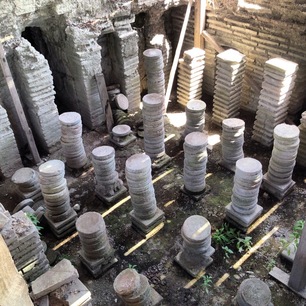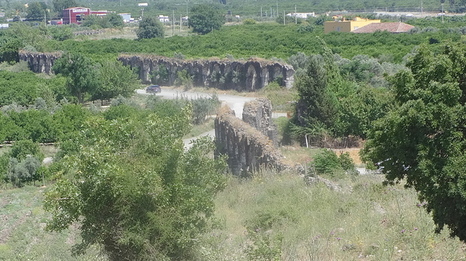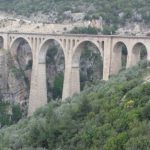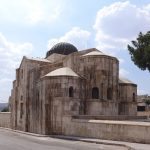Old names: Oiniandos, Epiphaneia, Gözen
In 333 BC Alexander the Great finally arrived in the southern corner of Anatolia where he was confronted by and managed to rout the Persian army led by Darius the Great near the point where the tongue of the Hatay starts its march south to Syria. The battle is thought to have taken place on the İssos Ovası (Plain of İssos) which means that the ruins here are usually called İssos/İssus/İsos (although the precise site of İssos remains contested). Sometimes, though, they’re called Gozen. To make matters even more confusing the site is right beside Erzin Station so to find it you need to be heading to the general area of Erzin.
In 2023 Erzin attracted attention as the only town in the vicinity that was not badly damaged by the twin earthquakes that levelled its neighbours.
The site
Today there’s not a great deal to see at İssos except a long stretch of black basalt aqueduct driving its way through an orange grove. If you follow the aqueduct when it starts climbing up hill you’ll be able to look down on the shape of the old theatre, only partially uncovered. Other ruins sit in neighbouring fields waist-deep in thistles.
If you follow the track under the aqueduct as it bears left you will come to a fenced area excavated a long time ago and then left to go to seed again. Under a protective roof the hypocausts of the Roman baths are the most obvious remains although you can also make out the shape of a small apsed church, and what are probably the foundations of houses and shops.
On the whole, this is a visit worth making only if you’re very serious about ancient sights or a great fan of Alexander.
Sleeping
There is a hotel in Dörtyol (Fourway Hotel: Tel: 0326-712 7474) but it’s not a very exciting town to stay in. You’re probably better off travelling on to the better choice of hotels in İskenderun and then coming back up the road to visit the ruins.
Transport info
The ruins are signposted beside Erzin railway station which is just to the south of the main road from Ceyhan to Dörtyol. To reach them you take the dirt track that runs in front of the station and then crosses over the lines where there’s a sign with details about İssos in Turkish. The aqueduct is no more than 1km along the track but I was warned against following it by locals who talked of thieves and dogs, somewhat discouraging me from further exploration.
On a second visit I took a taxi from Erzin which meant I had company to explore the other ruins.



